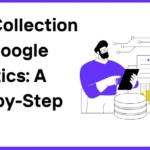Hyper-localized content creation refers to content specifically tailored to address the interests, needs, and values of a specific geographical area or community. In today’s digital age, businesses need to connect with their target audience in meaningful ways, and hyper-localized content helps achieve this by focusing on local topics, events, and regional nuances.
For businesses, especially those with a local or regional presence, creating hyper-localized content is essential for several reasons:
- It increases relevance by speaking directly to a local audience.
- It improves search engine rankings by targeting location-based keywords.
- It fosters stronger community connections, leading to higher engagement.
- It boosts trust and credibility within a local market.
By crafting content that reflects a region’s unique characteristics, businesses can more effectively engage with local customers and establish themselves as part of the community.
What Is Hyper-Localized Content?
Hyper-localized content is specifically designed to target a particular geographic location, community, or region. It goes beyond general content marketing by focusing on local events, trends, issues, or characteristics that resonate with a specific audience. Unlike broad content strategies, hyper-localized content is tailored to meet people’s unique needs and preferences in a specific area.
The importance of local SEO has been rising significantly in recent years. With more people searching for businesses and services near them, creating geo-targeted blog content has become essential. Local SEO helps ensure that content ranks higher in search results for location-based queries, making it easier for businesses to be discovered by local audiences.
Key factors include:
- Targeting local keywords
- Using city names and landmarks in content
- Aligning content with local interests
By focusing on local relevance, businesses can improve their visibility and attract customers from their immediate surroundings.
Why Create Hyper-Localized Blog Posts?
Creating targeted local blog posts offers numerous benefits for businesses aiming to connect with their community. By focusing on local topics, businesses can achieve higher levels of engagement. Local audiences are likelier to interact with content that speaks to their interests, events, and issues.
Key benefits of hyper-localized blogs include:
- Better engagement: Content that addresses local topics tends to receive more attention and interaction from the community.
- Higher conversion rates: Localized content builds trust with audiences, increasing the likelihood of them taking action, such as purchasing or sharing the content.
- Stronger community connections: Businesses that engage with local events, figures, or causes are seen as invested in their community, which helps foster loyalty.
Additionally, targeted local blog posts help businesses stand out from competitors by speaking directly to the needs and interests of their local audience. While competitors may rely on broad, generic content, hyper-localized blogs show customers that businesses understand their local environment and care about their community. This direct connection enhances a business’s reputation and helps it build a loyal customer base. Businesses can differentiate themselves in a crowded market by creating personalised, region-specific content.
How to Create Location-Specific Blog Content
Creating location-specific blog posts requires a deep understanding of your local audience and the issues that matter to them. Here is a step-by-step guide to help you get started:
- Research local trends: Start by identifying what’s trending in your region. Use social media, local news websites, and online forums to track popular discussions and events.
- Follow local events: Watch upcoming events such as festivals, sports games, or community gatherings. These provide great content opportunities to connect with your audience.
- Understand regional issues: Research the local challenges or topics affecting your community. Addressing these in your content can resonate deeply with readers.
- Engage with local figures: Interview local influencers, business owners, or community leaders to add authenticity and value to your posts.
Additionally, local content marketing involves incorporating relevant elements into your posts. For example:
- Local news stories: Use local headlines to frame your content.
- Feature local businesses: Spotlight community businesses, supporting the content and local economy.
- Community success stories: Share uplifting stories from the local area, such as charitable efforts or achievements.
Businesses can ensure their content reflects their community by focusing on these strategies.
Geo-Targeting Your Blog Content: A Practical Approach
Geo-targeted blog content plays a crucial role in SEO by improving the visibility of your blog for local searches. When content is optimised for specific locations, search engines are more likely to rank it higher for region-based queries, making it easier for local customers to find your business.
To effectively geo-target your content, follow these practical steps:
- Use local keywords: Include city names, neighborhoods, and regional terms relevant to your target audience.
- Optimise meta descriptions: Ensure your meta descriptions highlight local elements and include location-specific keywords.
- Add local landmarks or city names: Mention notable places or popular local attractions in your posts to make them more relevant to your area.
- Include local backlinks: Link to local businesses or resources, improving your blog’s relevance for location-based searches.
By implementing these techniques, businesses can significantly enhance their chances of being discovered by potential customers in their local area.
Localised Blog Strategies for Long-Term Success
Building a sustainable strategy for a localised blog involves consistency and engagement with your local community. To ensure long-term success, businesses must remain focused on the needs and interests of their local audience.
Here are the key steps to building a successful strategy:
- Create a content calendar: Plan your content around local events, holidays, and trends. A content calendar helps maintain consistency and ensures you don’t miss significant opportunities.
- Engage with the community: Stay active in local events and stories. By featuring local figures or supporting regional causes, your blog can build a stronger connection with the audience.
- Update regularly: Keep your blog posts fresh with new local information. For example, add details about ongoing events, new businesses, or community developments. This shows your audience that your content is current and relevant.
By integrating these strategies, businesses can keep their localised content aligned with evolving trends and maintain long-term relevance in the community.
Conclusion
This blog explored the importance and benefits of hyper-localized blog content in reaching and engaging with local communities. We discussed how creating content tailored to specific regions can drive better engagement, foster stronger connections, and improve SEO rankings. By focusing on local events, trends, and issues, businesses can establish themselves as trusted members of their communities.
We also covered practical strategies such as using local keywords, geo-targeting content, and maintaining a content calendar to ensure consistency. Additionally, we highlighted the need for ongoing community involvement and regular updates to keep content fresh and relevant.
To make a lasting impact online, it is crucial to implement content tailored to local audiences. By crafting content that speaks directly to local needs and interests, businesses can strengthen customer relationships and stand out in a competitive market. Start today, and let your blog become a powerful tool for local engagement.





Leave a Reply